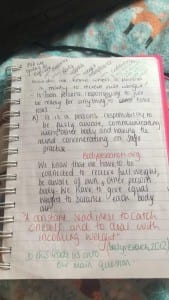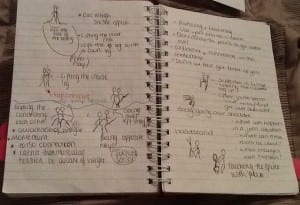This week I am focusing on the reading ‘What’s the score?’ (Keefe, M. 2003) noting the influences it has given me, initiating ‘phenomenological’ approaches of improvisation’ being everywhere’, causing thought upon how the world accepts opinion during a score. Within restrictions we have instructions, within these we have rules, how can the score change movement? It can change in dynamic, speed and momentum, it can change with direction of touch. light/ heavy.
Including pedestrian every day life as a performance and improvisation which coincides with one another, expressing how it can be understood. Interlinking with ‘What is performance?’ (Carlson, M. 2010) informing us that performance can be anything, sometimes subtle and not noticeable as a performance by many but fulfilled of everyday life and how an individual approaches daily activities. I feel at first that the readings were complex however I have come to appreciate them as contradictions are good and there is not a correct or wrong answer as each individual feels differently and will judge an opinion due to experiences related to the topic.
I feel that when thinking about ‘score’ during improvisation it gives more structure, causing restrictions many of times fulfilling explorations that may naturally of not been found, however using ‘score’ can influence explorations without being fully aware.
I continuously think about staying with it, fighting for explorations. Whether exciting moments will take place? Awareness of new investigations in own body and in others, ready to find these patterns maybe another time.
Do we have time to think before we move?
‘Improvisation sets a sense of play’ Kirsty told us to think about this, how can our improvisations become playful, i thought to have fun with it maybe, enjoy the sensations of adrenaline which arise over the body during explorations finding new pathways to enter and exit a bodies connection.I take this forward for the next few weeks.
Carlson, M. (2010) What is Performance? In: Bial, H. The Performance Reader. London: Routledge, 70-75.
Keefe, M. What’s the Score? Improvisation in Everyday Life. In Albright, A. C., & Gere, D. (2003). Taken by suprise: A dance improvisation reader. Middletown, Conneticut: Wesleyan University Press. Pp 229-238



